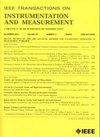基于神经网络的局域磁场图厘米尺度机器人位置方位估计
IF 5.9
2区 工程技术
Q1 ENGINEERING, ELECTRICAL & ELECTRONIC
IEEE Transactions on Instrumentation and Measurement
Pub Date : 2025-06-23
DOI:10.1109/TIM.2025.3581657
引用次数: 0
摘要
本文开发了一种基于主动控制磁场的机器人在平面上移动的位置和方向估计系统。位置估计系统由机器人上的两个磁传感器和一个主动控制的旋转永磁体组成。控制磁体的方向大致指向机器人,并在磁体指向方向周围的狭窄区域建立基于神经网络的局部磁场图。利用两个传感器测量的磁场,利用无气味卡尔曼滤波(UKF)估计机器人的径向和极向位置以及方向。然后,磁铁的方向被更精细地控制,以精确地指向其中一个磁传感器。这使得进一步设计渐近稳定的非线性观测器能够提高机器人径向位置估计的精度。大量的实验结果显示了该估计系统的性能,包括对移动机器人的二维位置和方向的实时估计。本文章由计算机程序翻译,如有差异,请以英文原文为准。
Neural Network-Based Position and Orientation Estimation of a Centimeter Scaled Robot Using a Localized Magnetic Field Map
This article develops a position and orientation estimation system for a robot moving over a plane based on the use of an actively controlled magnetic field. The position estimation system consists of two magnetic sensors on the robot and an actively controlled rotating permanent magnet. The orientation of the magnet is controlled to roughly point at the robot, and a localized magnetic field map based on a neural network is developed for a narrow region around the pointing direction of the magnet. Using the magnetic fields measured at both sensors, the radial and polar positions and the orientation of the robot are estimated using an unscented Kalman filter (UKF). The orientation of the magnet is then more finely controlled to point precisely at one of the magnetic sensors. This enables the further design of an asymptotically stable nonlinear observer that provides enhanced accuracy in the radial position estimation of the robot. Extensive experimental results are presented on the performance of the estimation system, including real-time estimation of both the moving robot’s 2-D position and its orientation.
求助全文
通过发布文献求助,成功后即可免费获取论文全文。
去求助
来源期刊

IEEE Transactions on Instrumentation and Measurement
工程技术-工程:电子与电气
CiteScore
9.00
自引率
23.20%
发文量
1294
审稿时长
3.9 months
期刊介绍:
Papers are sought that address innovative solutions to the development and use of electrical and electronic instruments and equipment to measure, monitor and/or record physical phenomena for the purpose of advancing measurement science, methods, functionality and applications. The scope of these papers may encompass: (1) theory, methodology, and practice of measurement; (2) design, development and evaluation of instrumentation and measurement systems and components used in generating, acquiring, conditioning and processing signals; (3) analysis, representation, display, and preservation of the information obtained from a set of measurements; and (4) scientific and technical support to establishment and maintenance of technical standards in the field of Instrumentation and Measurement.
 求助内容:
求助内容: 应助结果提醒方式:
应助结果提醒方式:


